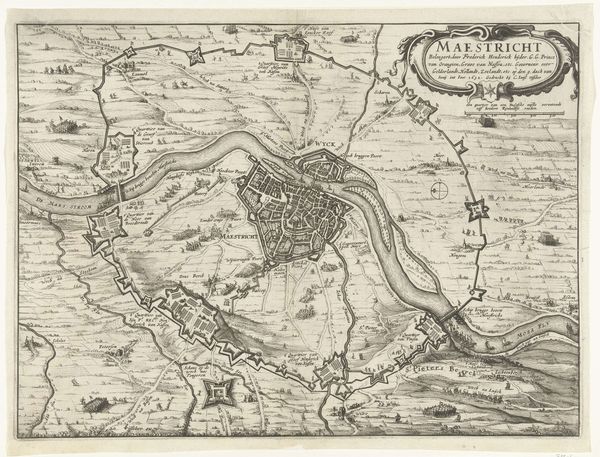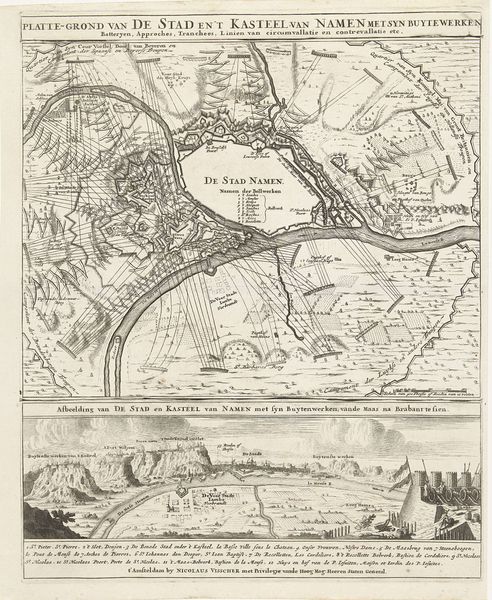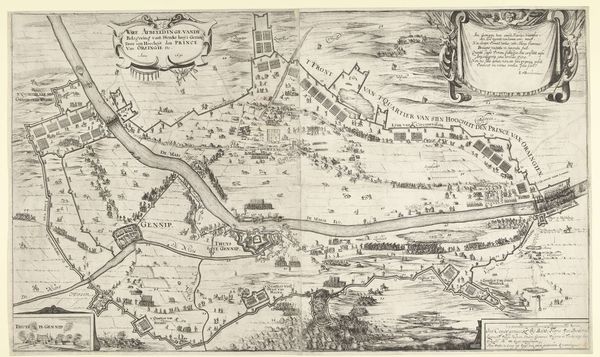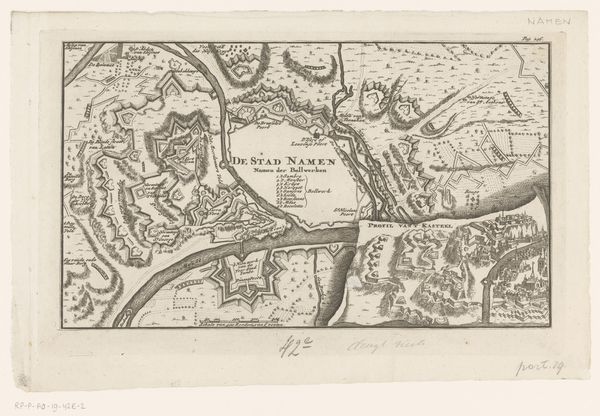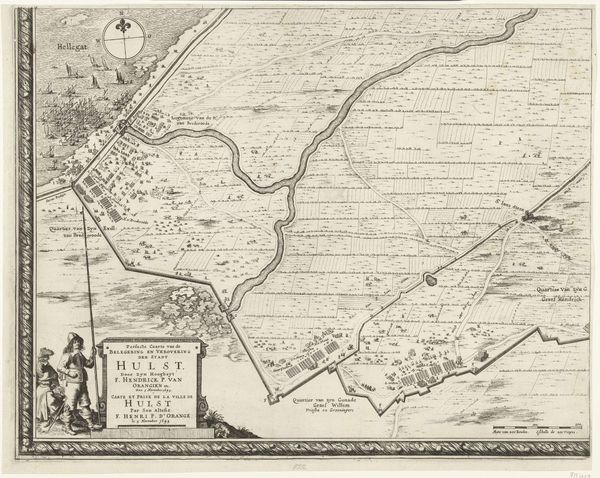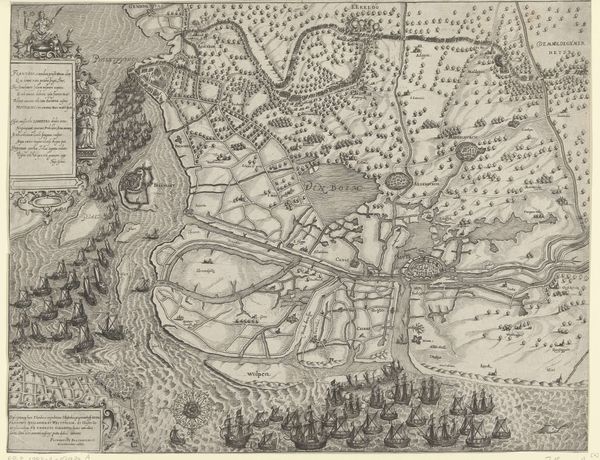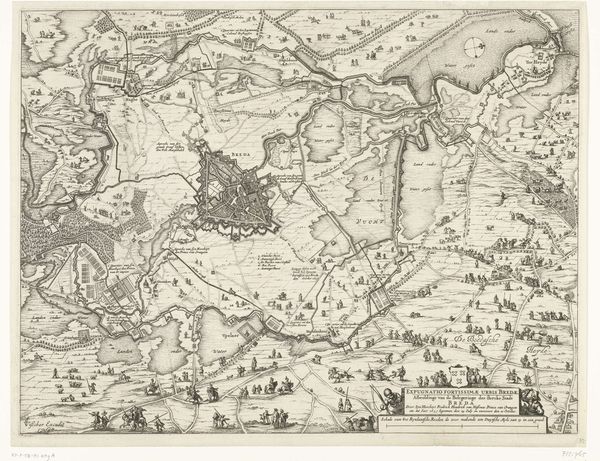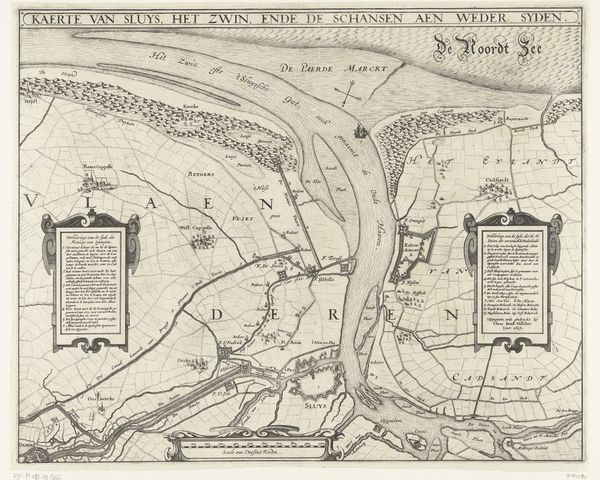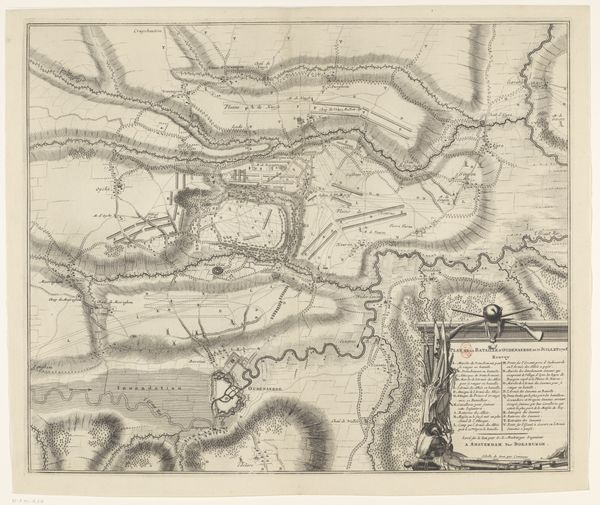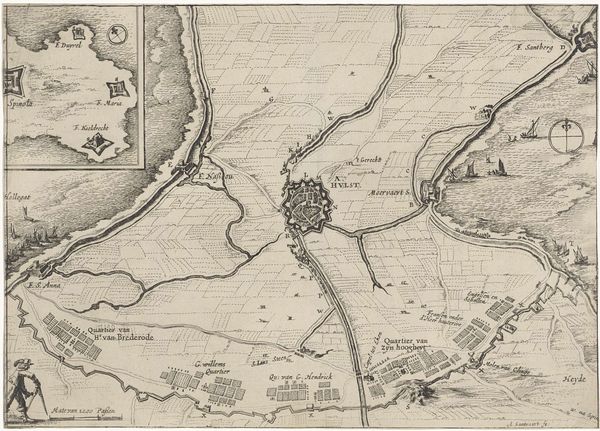
Kaart van de stad Namen met het kasteel, belegerd door het Franse leger, 1692 1692
0:00
0:00
anonymous
Rijksmuseum
drawing, paper, ink
#
drawing
#
baroque
#
pen drawing
#
landscape
#
paper
#
ink
#
cityscape
Dimensions: height 364 mm, width 520 mm
Copyright: Rijks Museum: Open Domain
Curator: Before us we have a detailed cartographic depiction, "Kaart van de stad Namen met het kasteel, belegerd door het Franse leger, 1692"– or, Map of the city of Namur with the castle, besieged by the French army. It was created anonymously, and resides here at the Rijksmuseum. Editor: My first impression is one of intense detail, meticulously rendered. The somber monochromatic ink on paper emphasizes precision and functionality; it feels like a blueprint more than an artwork in the traditional sense. Curator: Precisely. Note the elaborate fortifications and strategic deployment of troops around the city. The Baroque aesthetic, so evident in the flourishes of the cartouche, still yields to the need for clear, pragmatic communication above all else. It shows us the structures. Editor: Structures built to destroy, though! It's easy to focus on the visual artistry, but consider the sheer human labor that went into building those ramparts and digging those trenches, not to mention the impact of warfare on those doing the work. The production is deeply entwined with war. Curator: True, war, as a catalyst, has often dictated resource allocation and innovation. Here, the precise linework delineates not only the natural landscape but also the infrastructure of conflict, mirroring the era's shift towards rational planning and systematized violence. Editor: But the means of conveying information itself becomes a powerful tool. By showcasing this battle, are we memorializing the labor and conflict? Or glorifying a very uneven distribution of power? Curator: Perhaps both. It’s interesting how the lines not only depict form but also signify social and political structures, reflecting how cartography, even at its most ostensibly objective, reinforces certain perspectives. The city appears almost as a diagram, each district demarcated by clear boundaries and designated for specific functions, embodying the order of a planned state. Editor: That tension – between functionality, artistic skill, and social critique is, I think, what makes this anonymous piece so enduring. Curator: Indeed, a cartographic lens through which we might examine not just space, but power. Editor: A telling relic of production! Thank you for illuminating this piece for me.
Comments
No comments
Be the first to comment and join the conversation on the ultimate creative platform.
